The ultimate guide: What to wear during survival training and bushcrafting
The right clothing can make the difference between life and death in survival situations. In this guide, you will find out what to wear outside.
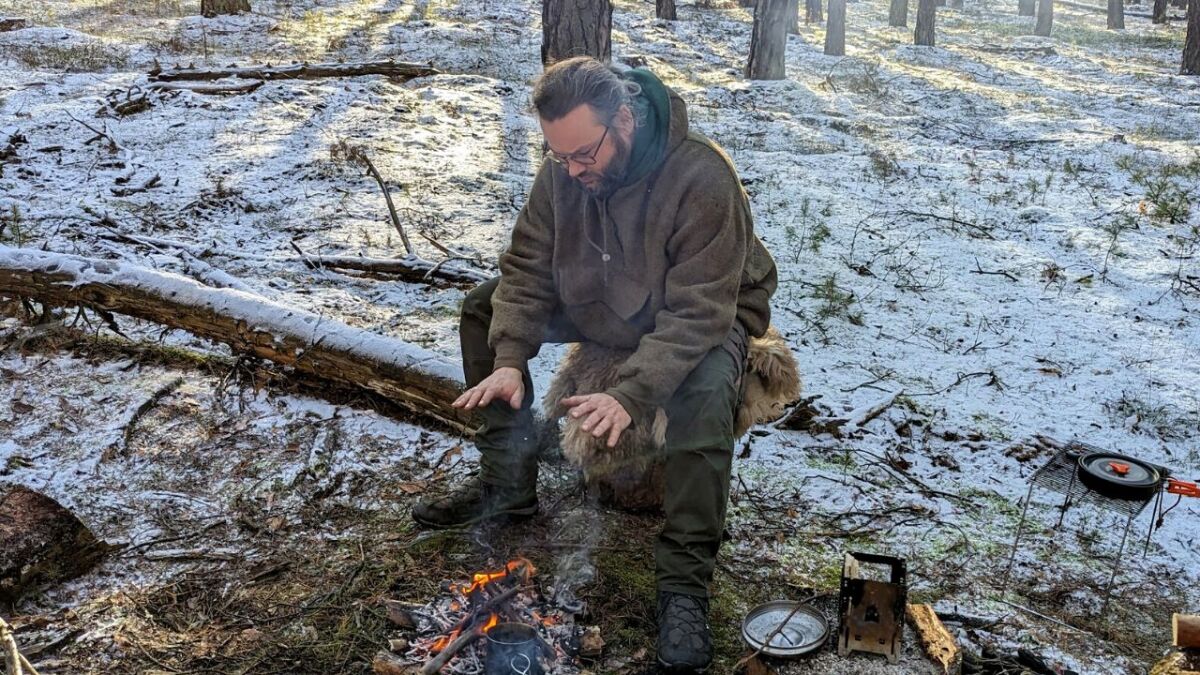

From Martin Gebhardt. Check out my “About me” page.
👉 The key facts from this guide
- Materials: Choose clothing made of materials such as wool and nylon, and avoid cotton, especially for garments that directly touch your skin.
- Layering: Use layering for cold protection. This includes a base layer that wicks away moisture, a middle layer for insulation, and an outer layer for protection from wind and weather.
- Durability: Your clothing should be durable and long-lasting, easy to wash and repair.
- Special Materials: Consider special materials such as ripstop, polyamide, Gore-Tex, and elastane, each of which offers its advantages.
- Investment: Be prepared to invest in good outdoor clothing. It can be expensive, but often lasts a lifetime.
- Sustainability: Pay attention to the sustainability of manufacturers. The clothing industry is one of the largest CO₂ producers.
It's difficult to find the perfect clothing when selecting for your survival training.
You need clothing that keeps you warm, but also allows mobility, and does a little extra work, like protection from rain and wind.
It is difficult to find the perfect balance between warmth and functionality, and it is even more difficult to know which clothing options are best suited for a particular environment.
I have compiled important information in this guide to assist you in selecting the right clothing for your survival training.
Let's get started so that you know what to wear at the end.
For a quick overview
Do you have little time? Then here are the most important points:
Quick Overview
- Focus on materials, construction, and style when it comes to outdoor clothing
- Avoid cotton in contact with the skin
- Follow the layering principle for cold protection
- Colors should be eye-catching (for expeditions) or natural (for hobbies)
- Sustainability is becoming important in outdoor clothing
- Consider if you need specialized functional clothing
If you want to be on the safe side and get all the information on the topic, then keep reading now.
What clothing to wear in a survival situation?
Clothing choice heavily depends on the circumstances. Weather, temperature, and your plans play a crucial role. You prefer wool to cotton and nylon over polyester as materials. Avoid cotton for all clothing items that come into contact with your skin, unless it is a hybrid blend that does not absorb too much moisture.
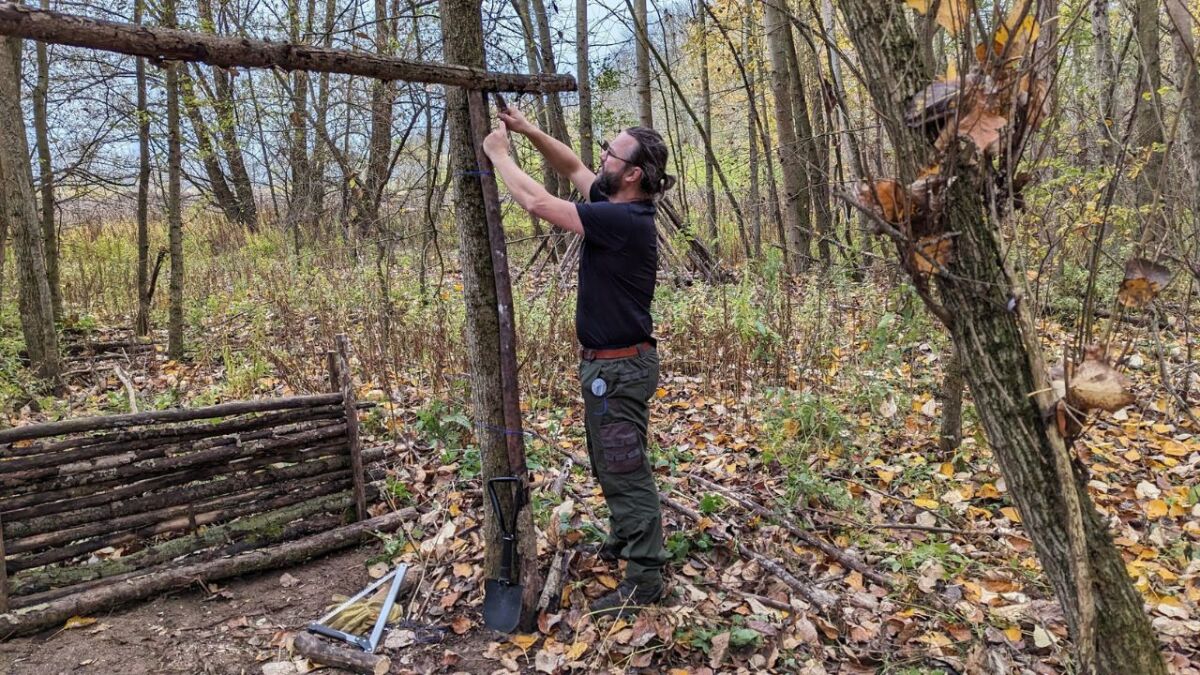
It is all the more important to understand precisely which piece of clothing fulfills which function.
The focus is not only on what you need, but also on what you don't need.
Not everything that is advertised by larger producers is essential in the wilderness. The ability to distinguish is certainly important to know which clothing you really need to survive.
However, I am still convinced that it is worth spending money on equipment and not skimping.
Good outdoor clothing can be expensive, but it often lasts a lifetime.
In addition, your clothing for survival situations must possess various properties and must not fail you during use. That would be fatal, and you should not have to worry, especially in extreme situations.
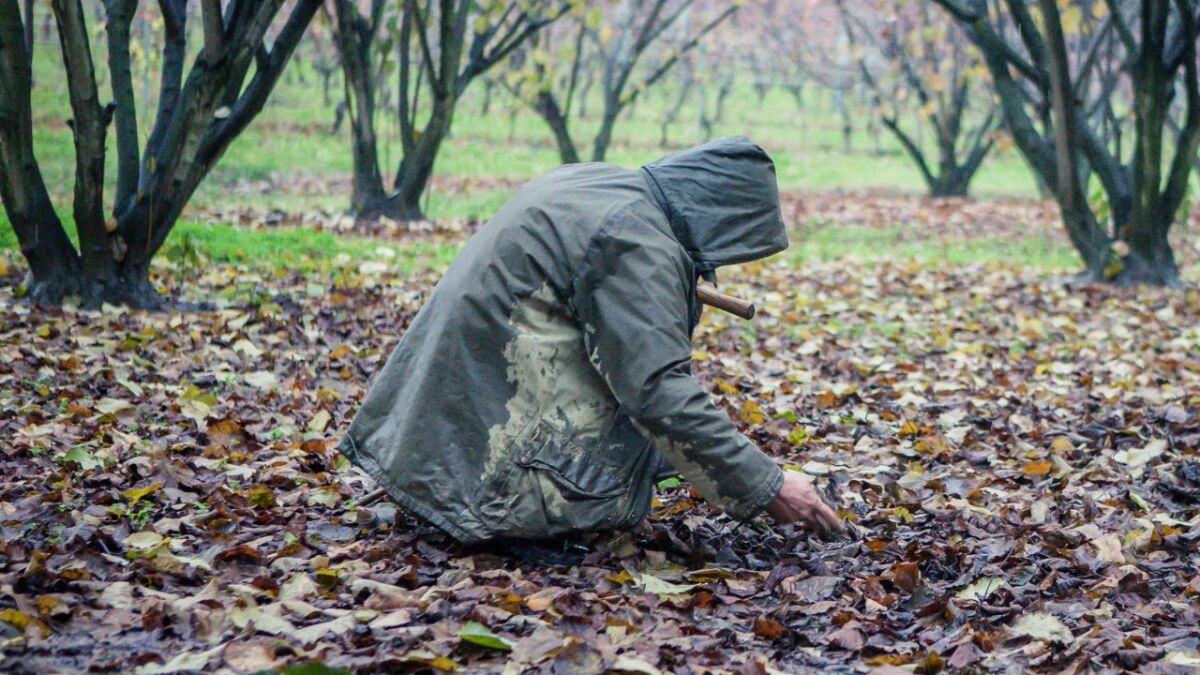
At the same time, I would like to point out the importance of considering sustainability when choosing manufacturers. After all, we want to continue preserving the wilderness and should support companies in our investments that have this in mind.
Although there are limits, especially with water-repellent materials, the clothing industry is one of the largest CO₂ producers.
You see, there is a lot to consider, and I will gather the information for you below and present a guide that will give you an awareness of the right clothing for your purposes.
Firstly, I would like to give you some tips on WHAT to look for when buying clothes and introduce you to the most popular materials with their advantages and disadvantages.
Afterward, you will learn HOW to dress yourself and what to pay attention to.
Focus on Materials, Construction, and Style
If you find yourself in a survival situation, you want clothing that has the following features:
- Robust
- Durable
- Lightweight
- Comfortable
- Protective (against elements such as heat, cold, water, fire, or threats like insects)
- Easy to wash, maintain, and repair on site
The problem: You won't find all of these features in one piece of clothing - and in fact, it will be difficult to get two or three of the above-mentioned features at the same time. You will mostly have to compromise to find survival clothing that meets your needs and budget.
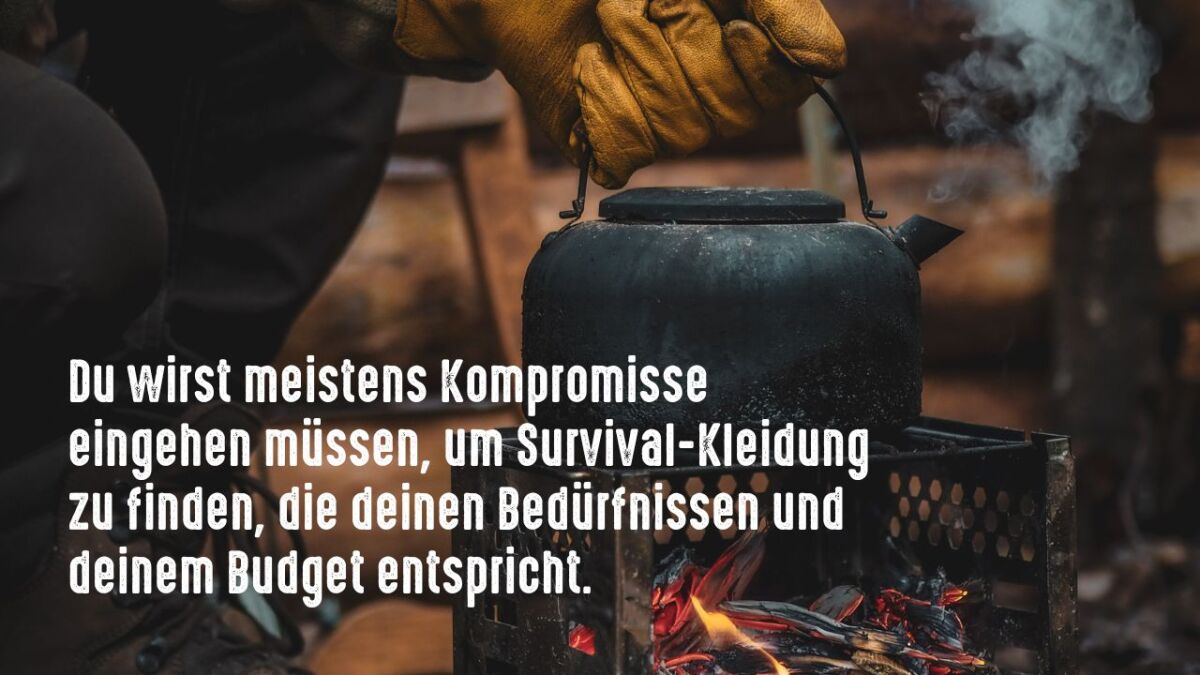
The above list of important features can actually be reduced to just three: Durability, Weight, and Cost.
You will almost always be forced to choose a maximum of two of them when selecting an item.
When you go shopping, you can best achieve your goals by paying attention to materials, construction, and overall styling.
Materials and processing quality always affect things like durability, weight, breathability, water resistance, UV protection, repairability, and so on. When it comes to styling, it's not about fashion, but rather about the category of what you want to express with your clothing. Are you more of a tactical Bushcrafter or a traditional Bushcrafter?
Materials of Clothing - An Overview
First, you should be aware that fabrics are generally divided into natural fibers and synthetic fibers. Natural fibers include wool, cotton, and merino wool. Synthetic fibers include nylon and polyester.
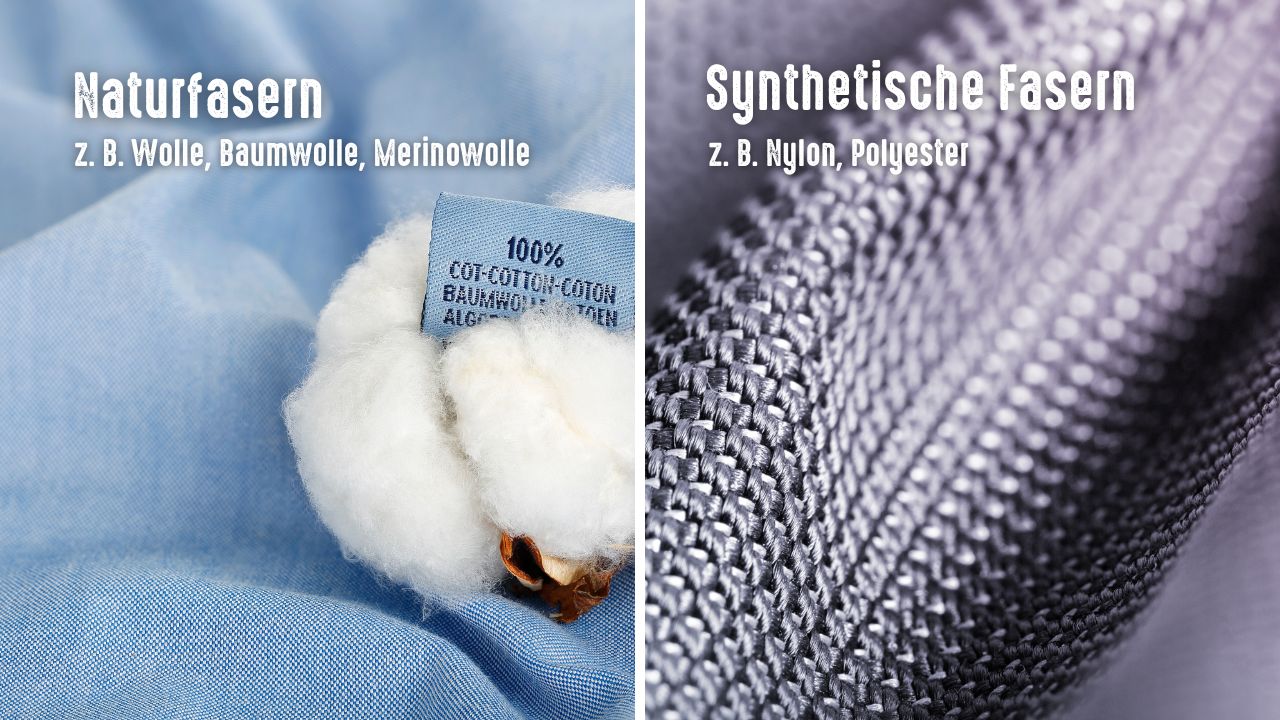
Natural fibers have the following advantages:
- Easy on-site repair
- Low cost
- Breathability
- Moisture transport
However, moisture is the enemy of most natural fibers.
Plastics such as nylon, polyester, and polypropylene have the following advantages:
- Great strength-to-weight ratio
- Durability
- Abrasion resistance
- Low cost
However, plastics are often difficult (or impossible) to repair on site and their main enemy is fire.
Mixtures of synthetic and natural materials can offer you the best (or worst) of both worlds depending on the blend. For example, nylon/cotton blends are popular because they are breathable and durable at the same time.
I would now like to introduce you to the four most common and popular materials - cotton, wool, polyester, and nylon - in more detail. You can compare these materials with others, and they form the basis for high-quality survival clothing.
Cotton
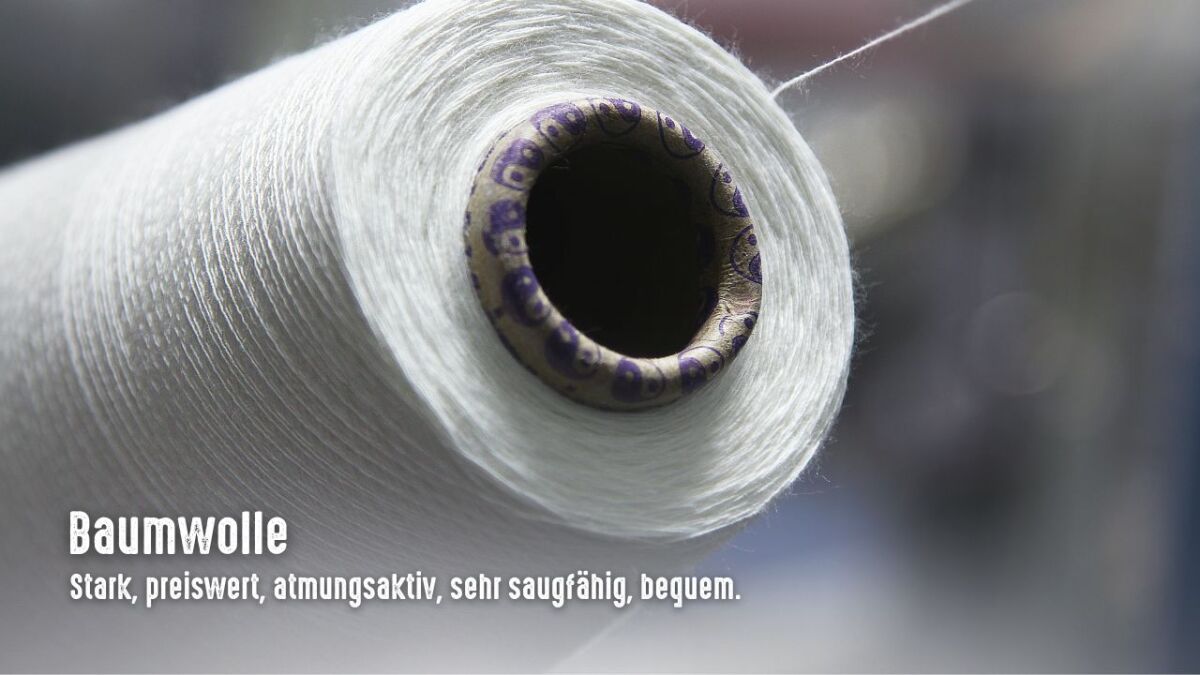
- Main features: Strong, affordable, breathable, highly absorbent, comfortable.
- For the base layer: Not suitable, even dangerous because cotton absorbs sweat and releases it slowly. This will take away your body heat.
- For outerwear: Useful as a blend, especially with a cheap rain barrier worn over it.
- Water resistance: Highly absorbent, but the right fabric or finish can help.
- Fire resistance: Safe to wear near open flames, but not fire-resistant.
There is still the old school of cotton fabrics, where waxing and oiling are used to make the cotton or cotton blends water-resistant.
Then there are cotton blends, such as NyCo (nylon-cotton). This combination can offer a fantastic blend of strength, durability, and low cost, especially when coated (factory or retrofitted) to help keep water out.
And when it comes to waterproofing, a cheap poncho or a garbage bag (Find more than 32 survival applications for garbage bags here) with head and armholes can make any cotton clothing item instantly "waterproof". You should always keep such little tricks in mind.
However, the most important thing about cotton is that you should not wear it as a base layer directly on your skin.
And it doesn't matter whether it's a T-shirt or socks. If you sweat and don't dry out anymore, you'll know what I mean. And the moisture can mean hypothermia, which can be life-threatening.
Wool
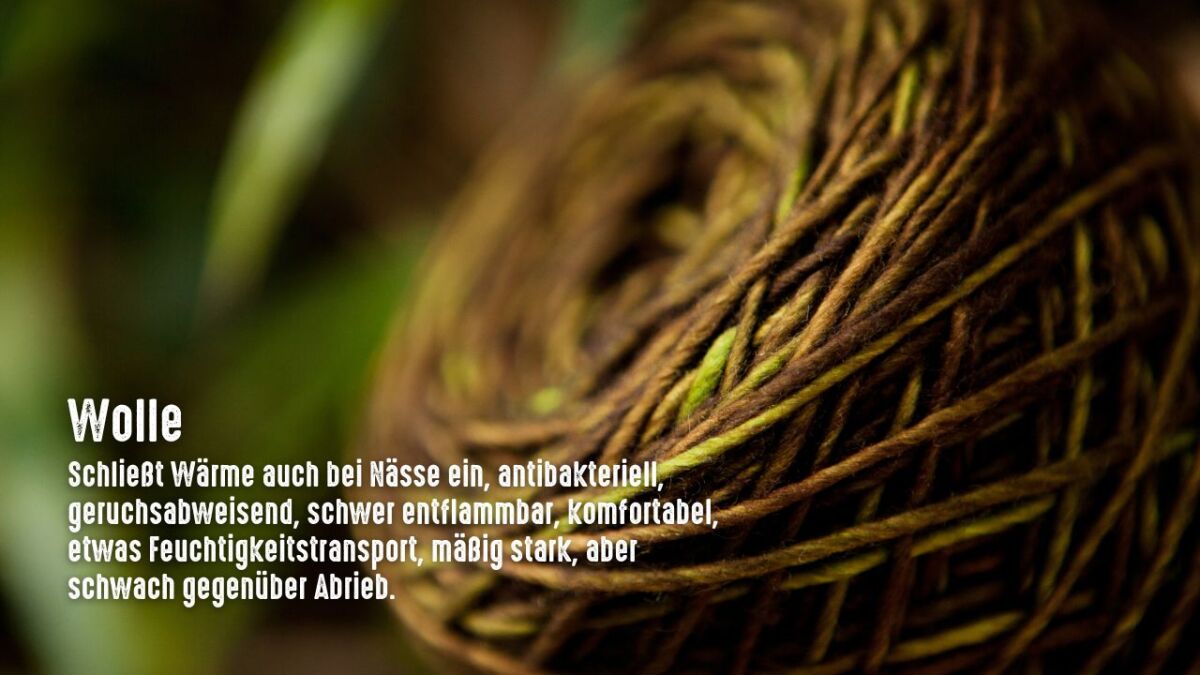
- Main features: Retains warmth even when wet, antibacterial, odor-resistant, flame-resistant, comfortable, moderately moisture-wicking, moderately strong but weak against abrasion.
- For base layer: Excellent choice as it is moisture-wicking and temperature-regulating. However, wool can be itchy (I recommend using Merino wool).
- For outerwear: Wool outerwear or processed wool such as tweed is a winter classic recommended by many survival experts (Find the 7 best survival experts here). The disadvantage is its abrasion resistance, as wool wears out faster than cotton or other fabrics.
- Property towards water: Wool absorbs some moisture and retains it close to the core of the fiber, keeping it away from your skin. Wool also has natural waxes that help repel some water.
- Property towards fire: Wool can be safely worn near open flames. When wool comes into contact with fire, it burns slowly. When the heat source is removed, it stops burning.
Wool is probably the best natural fiber for survival clothing because it combines many of the important properties, from the base layer to the outerwear.
A good woolen garment also protects you from the cold when wet. As a base layer, wool wicks away moisture and then releases it through evaporation when the temperature warms up. Wool helps regulate your body temperature.
The disadvantages of wool clothing are the high price and low abrasion resistance. Good wool products cost considerably more than cotton and synthetic materials. So, you should be prepared to spend a little more money on the material.
It is also true that finer wool, such as Merino wool, has lower abrasion resistance. I own socks made of Merino wool and unfortunately, they only last one winter.
Polyester
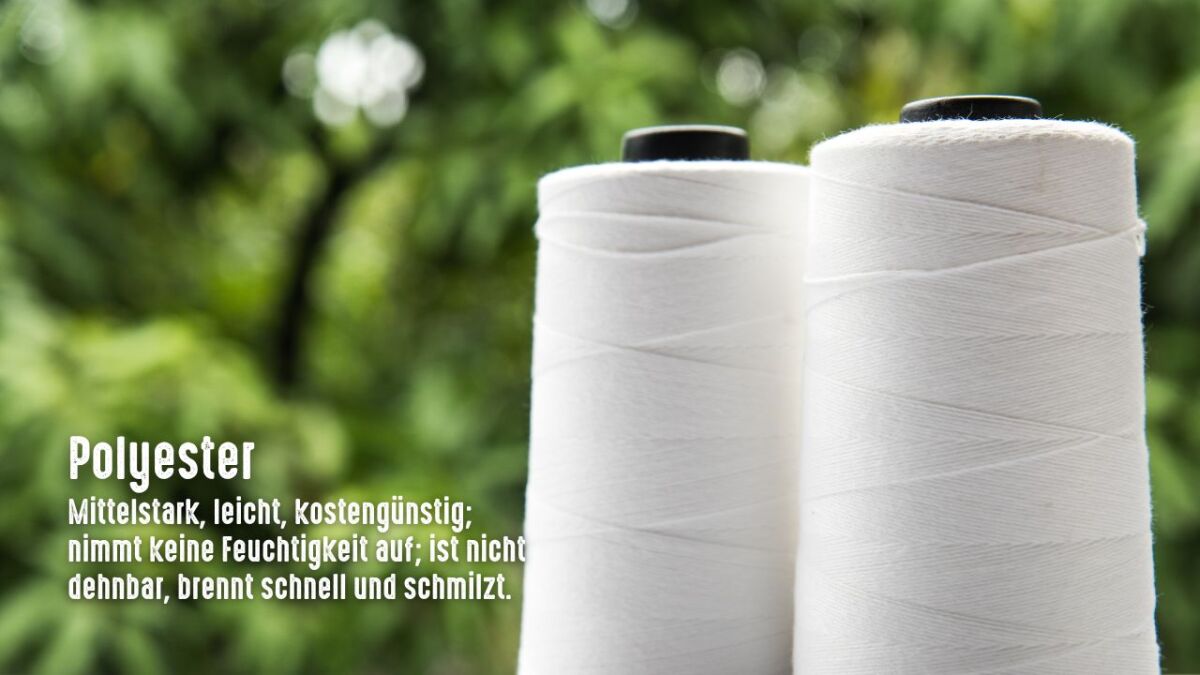
- Main characteristics: Medium strength, lightweight, cost-effective; does not absorb moisture; not stretchable, burns quickly and melts.
- For base layer: Polyester base layers are often quite comfortable and affordable.
- For outerwear: Polyester is a more cost-effective alternative to nylon.
- Water resistance: Polyester is good in rain and snow as the material does not absorb moisture.
- Fire resistance: Since polyester is a plastic, it burns and melts when it catches fire.
Polyester is much cheaper than nylon, it resists UV light and holds color slightly better than nylon. Occasionally, you don't want a stretchy fabric like nylon, so you opt for polyester.
Materials made of polyester have lower abrasion resistance than nylon. And the disadvantages are clear:
- Polyester is difficult to repair and usually only fabric tape helps. Normal stitches with needle and thread will not hold for long.
- Polyester melts in heat and can cause severe burns.
Nylon
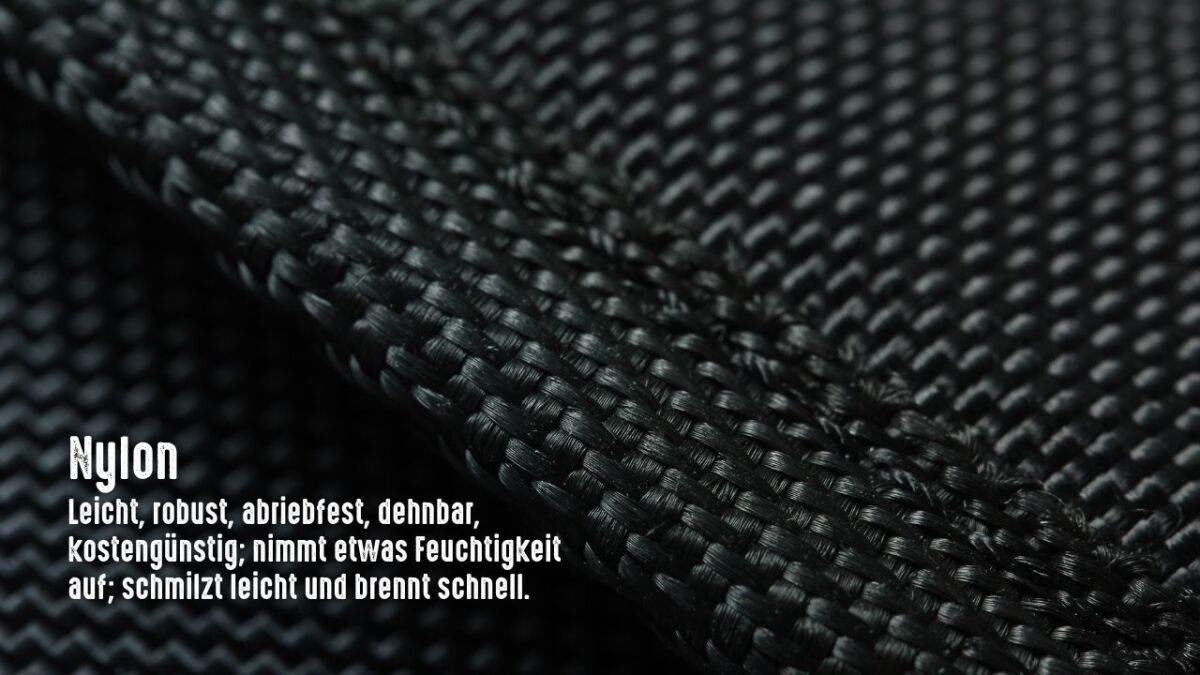
- Main characteristics: Lightweight, durable, abrasion-resistant, stretchy, cost-effective; absorbs some moisture; melts easily and burns quickly.
- For base layer: Nylon is a solid base layer. But don't wear it too close to the fire.
- For outerwear: Nylon is one of the best survival outerwear fabrics in every way, except for fire resistance.
- Water resistance property: Nylon needs to be treated to become water-resistant.
- Fire resistance property: Since nylon is a synthetic fabric, it melts when it burns. This causes it to stick to the body and cause severe burns.
The fabric Nylon is popular for outdoor and military clothing because it is comfortable, sturdy, and durable. If you treat Nylon clothing with water-repellent materials, you will enjoy it for a long time.
However, nylon is pricier than its main competitor, polyester, but nylon is generally more durable in relation to weight and has a higher abrasion resistance.
Like polyester, nylon also has two fundamental disadvantages:
- The fabric is difficult to repair. However, ripstop nylon can be sewn more often.
- Fire is fatal for nylon as it burns and melts in heat. You don't want that on your skin.
Alright, now you know the basic materials. I would like to introduce you to some mixed materials and inventions that play a big role in the outdoors.
Ripstop
Ripstop is technically not a specific fabric, but a weave made from many synthetic fabrics (polyester, nylon, and blends).
The web technology used to produce this fabric prevents cracks from spreading once they start - hence the name "Ripstop".
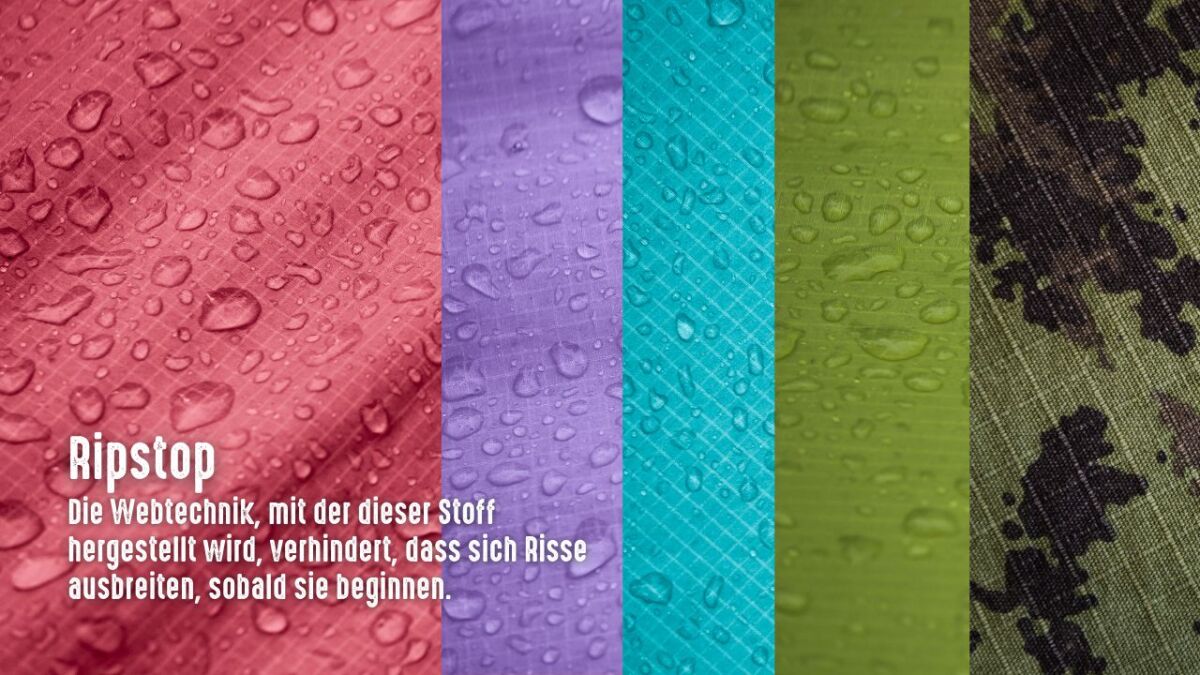
Ripstop fabrics have unique uses, especially outdoors. They are often used in rain jackets and camping equipment such as tents and sleeping bags. Kites, parachutes, and flags are also frequently made from ripstop. Ripstops are easily recognizable due to their square cross-stitch pattern.
This fabric is breathable and lightweight, yet offers excellent strength/durability. Many ripstop fabrics are also treated with DWR (Durable Water Repellent), which helps water bead up and roll off the fabric. Some types of ripstop also feature a fire-resistant UV coating. Typical outdoor applications include hammocks, tents, stuff sacks, and lining for bags or jackets.
Nylon
Polyamide alone is a flexible synthetic fiber, also known as nylon. The fabric made of polyamide is waterproof and can withstand friction and scratches without wearing out, but is susceptible to sunlight.
Most commonly, polyamide is used as a blend with polyester or cotton. As a blend, it is often used for underwear, waterproof outerwear, and sportswear.
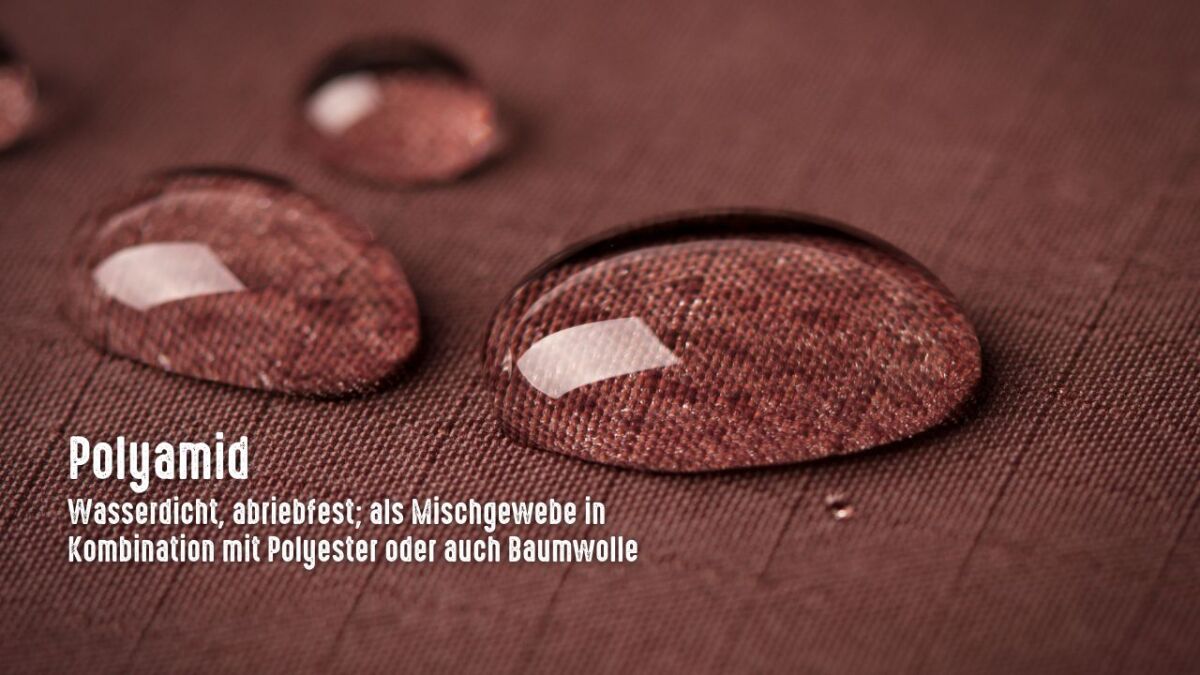
Gore-Tex
Gore-Tex is essentially a membrane that stops water from the outside, but allows vapor to pass through from the inside. This means that Gore-Tex not only protects you from rain, but also keeps you dry from the water vapor you produce when sweating.
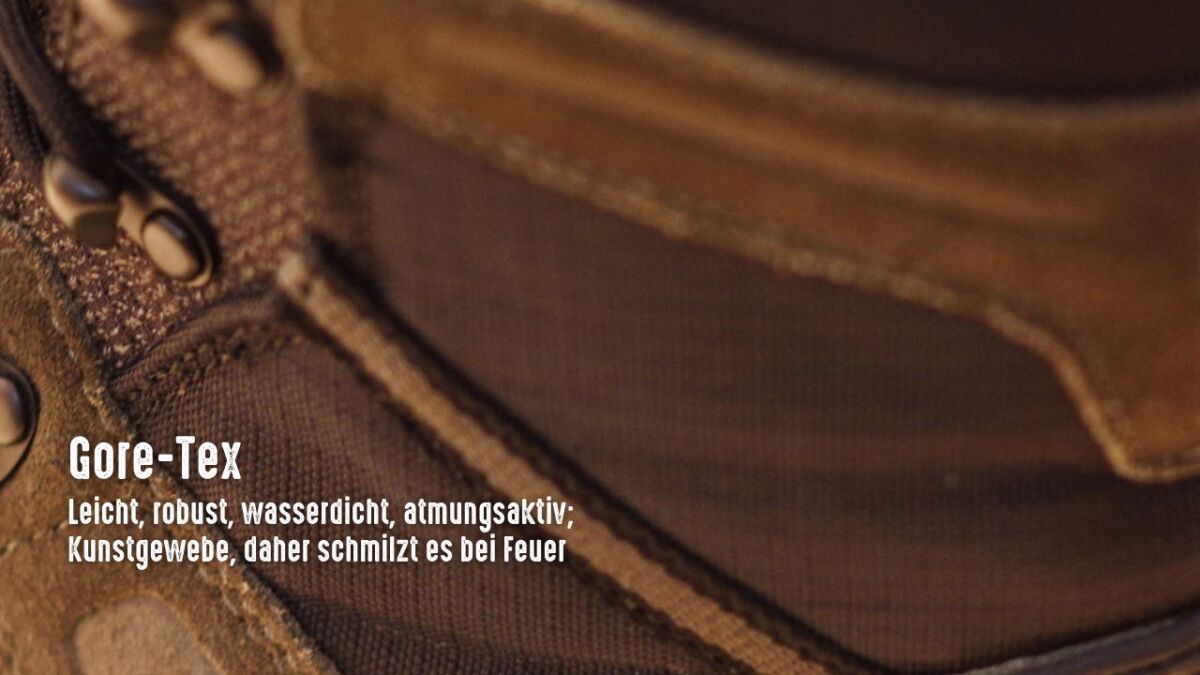
The membrane itself is made of an expanded polytetrafluoroethylene fiber (also known as Teflon). Stretching this polymer forms a microporous material with over 9 million pores per square inch. This membrane is connected to various fabrics in different ways to make it completely waterproof and windproof.
Gore-Tex is mainly used for the production of functional clothing and shoes such as ski jackets, lightweight jackets, and hiking shoes. Its performance in harsh weather conditions makes Gore-Tex almost synonymous with outdoor clothing.
Top outdoor brands like The North Face, Patagonia, Nanamica, and Arc'teryx use Gore-Tex to produce lightweight and high-performance fabrics.
Alternatives to Gore-Tex
Outerwear materials are a multi-billion dollar industry, with Gore-Tex currently being the most well-known brand on the market.
But Gore-Tex is not without its challengers. Other brands have used treated polymers to create other membranes with similar effects to Gore-Tex, including:
- eVent - This brand also uses a stretched Teflon membrane similar to Gore-Tex without violating patents.
- H2No - This is the proprietary brand of Patagonia that uses polyester and polyurethane laminates to reflect the effects of Gore-Tex.
- HyVent - A fabric made by The North Face that also uses polyurethane.
- Waxed cotton - The natural version is breathable, water-resistant, can be repaired at home, and develops a beautiful patina, but can get soaked during serious outdoor activities.
Elastane
This synthetic fabric is also known as Spandex or Lycra. However, it is not used alone, but with other fabrics.
Oftentimes, elastane is added to other fabrics to keep them elastic. The percentage of elastane is usually up to five percent.
If you are looking for flexible outdoor clothing that allows you to remain mobile, make sure that elastane is integrated. Clothing with elastane adapts better to body shapes and movements.

Now let's take a look at HOW you dress.
The Onion Principle for Cold Protection
Especially in winter weather or in cold latitudes, choosing the right clothing is vital for survival.
To prevent your body from cooling down, you not only need to dress as warmly as possible, but also protect yourself from wind, snow, and rain.
The onion principle has clearly proven itself to me here. You dress in three to five layers and can regulate your body heat by adding or removing layers.
In addition to the functions of the various layers, the trapped air in between also acts as insulation.

The Base Layer
The first layer is your base layer and is in contact with your skin. Here you want to wick away sweat and moisture so that you don't end up with a wet undershirt at the end of the day.
Merino wool is very popular as a moisture regulator, but cotton is not suitable because it retains sweat, gets wet quickly, and cools the body.
When it comes to merino wool, make sure it is free of mule sing. This involves removing pieces of skin from sheep without anesthesia.
You can also consider synthetic fibers here.
The Middle Class
In the middle layer, you can also incorporate several pieces of clothing depending on your requirements. For freezing weather, I definitely recommend a fleece jacket here.
Depending on the temperature, a sweater can also be worn underneath here. Because the middle layer serves as thermal insulation and should not be neglected.
The Outer Layer
The outer layer should protect you from wind and weather. For me, a functional jacket has proven to be effective. If there is no rain in sight, however, I exclusively use my wool jacket.
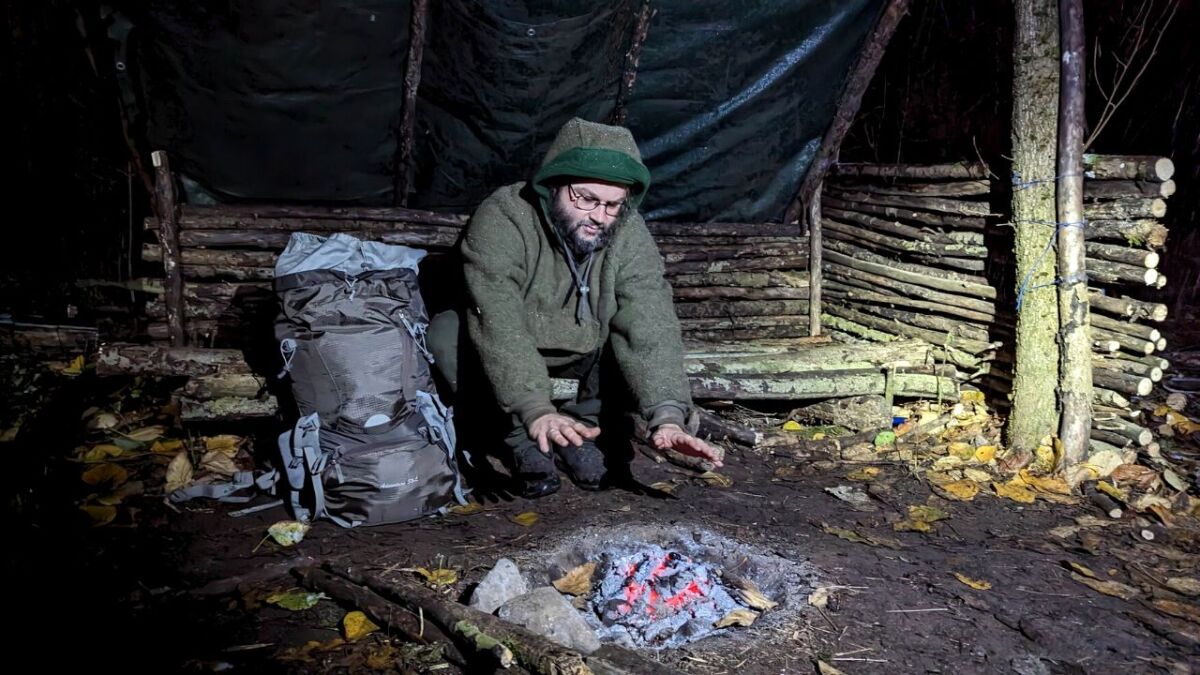
Ideally, you can button a fleece jacket of the middle layer here. Functional jackets are usually waterproof and shield you from the wind. At the same time, a certain degree of breathability is still ensured.
If you have concerns and want to protect yourself more comprehensively from snow and rain, you should take a poncho with you. This also protects your backpack and a part of your legs.
Thick winter jackets or parkas are, in my opinion, unsuitable as they often restrict movement. In addition, bulky jackets also take up a lot of space if you need to store them.
For the lower abdomen
When choosing pants, a similar principle applies. It is recommended to wear rain pants on the outside, which keep out wind and water.
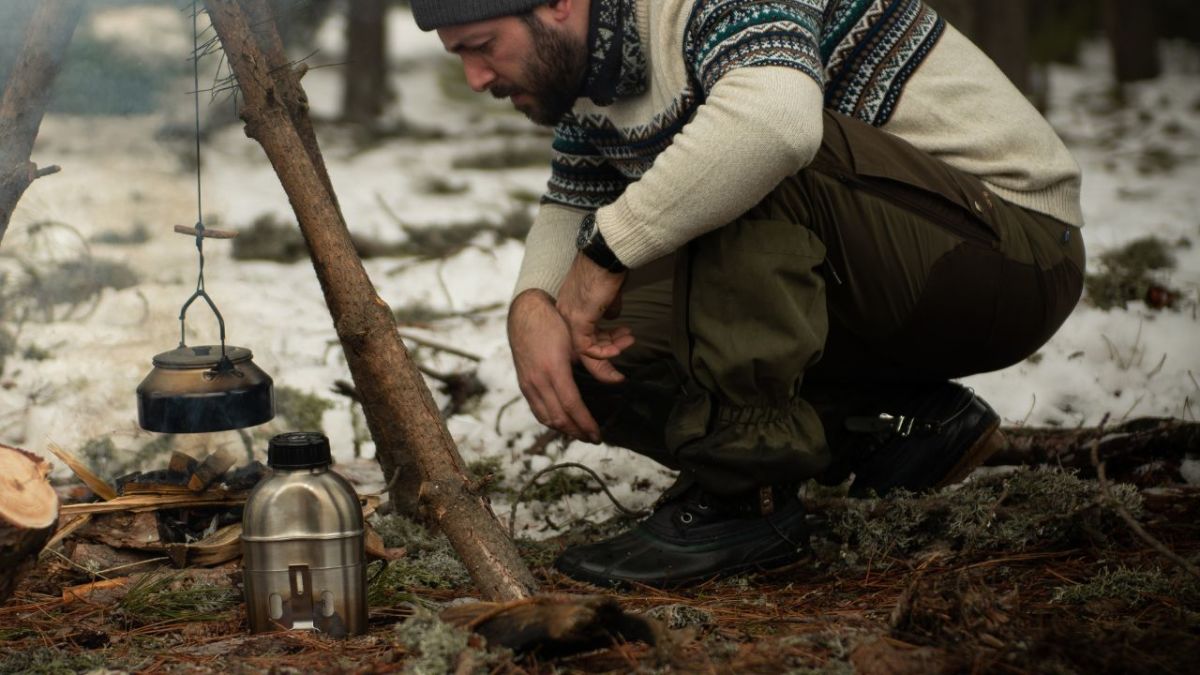
Below that, wear your regular functional pants or trekking pants, ideally made of thick material. Underneath, you can choose between long or short underwear depending on the situation. I love, among other things, the fleece leggings that I get from Decathlon.
To complement this, I recommend my purchase guide for pants. There you will find important information that you should know before buying, and I also recommend pants.
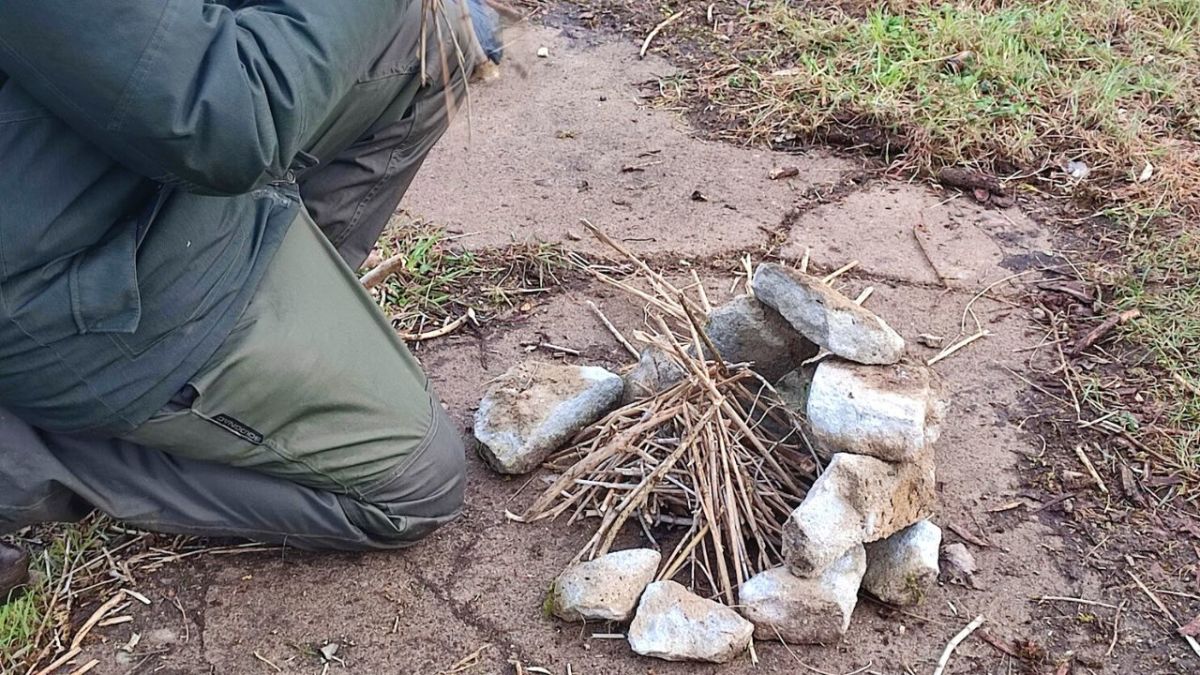
Shoes and Socks
The right footwear is of great importance for your time in the wilderness. There are many things to consider when choosing shoes and a whole guide could be written on the subject.
When it comes to cold and weather, good hiking shoes are often sufficient. I prefer leather as the material here. Leather also regulates moisture and fits wonderfully to the foot.
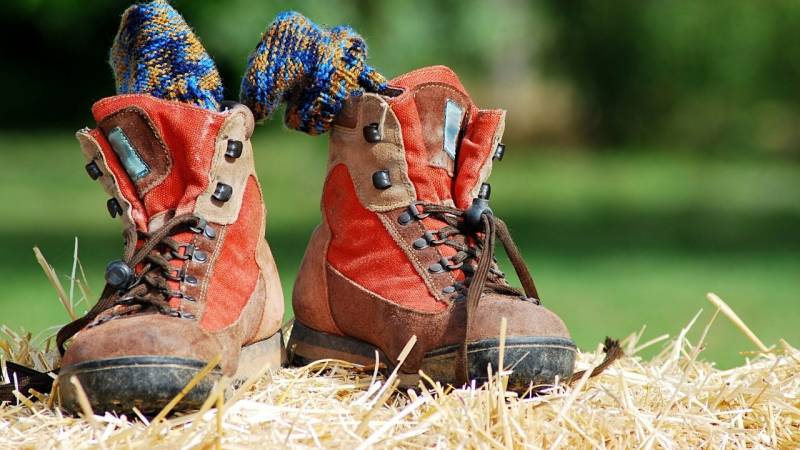
I have also had experience with vegan leather and was bitterly disappointed. Unfortunately, the wearing comfort and durability are lacking here, but I am also happy to hear about positive experiences in the comments.
For that, I would take some pairs of woolen socks and also plastic bags for emergencies. This way, you can walk your wet shoes dry and protect your feet from moisture. Leather often dries very slowly. Drying shoes by the fire is not very useful, as the leather will become brittle.
Headwear
Your head should definitely be protected in the cold, as a lot of body heat is lost here. A hat made of fleece or knit is ideal.
During extreme cold, a winter balaclava can also be considered. This also proves to be very useful when sleeping at night.
Additionally, the rain hat is also a way to protect oneself from the weather. However, I prefer the hood of my functional jacket and wear my hat underneath.
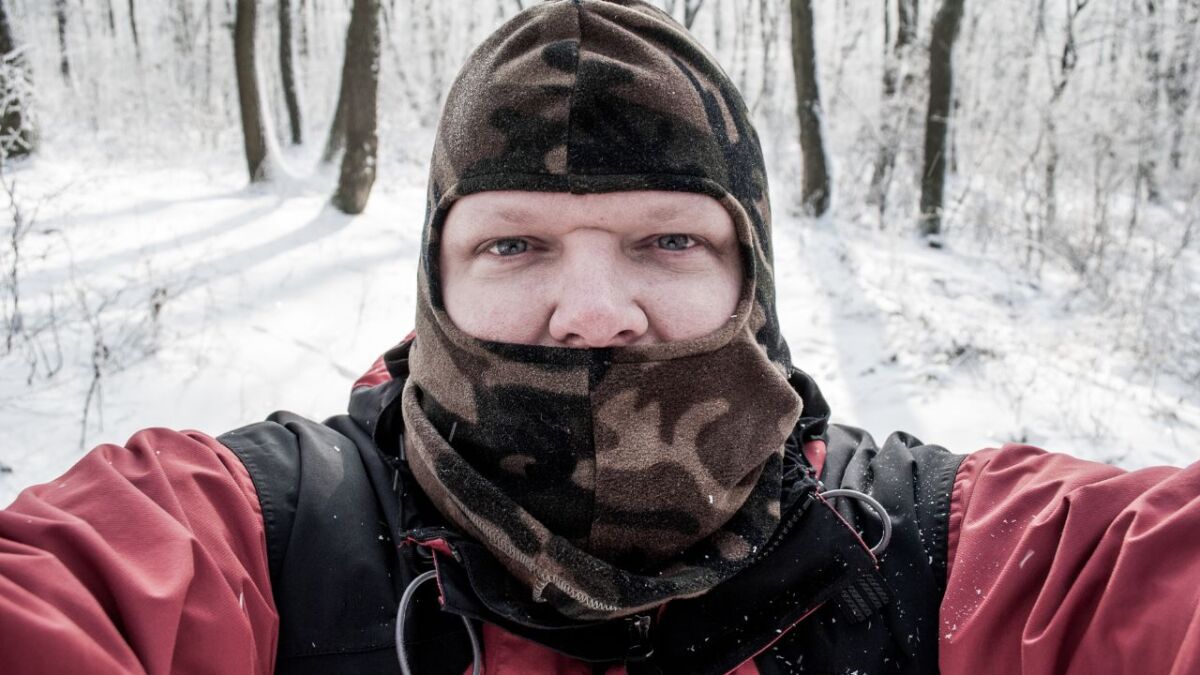
Gloves
When it comes to gloves, it is important for me to keep my hands warm without experiencing too much restriction of movement.
Especially for activities such as collecting wood or in other Bushcrafting situations, gloves are indispensable in cold weather.
Here you will find the best bushcraft gloves and how I rated them.
When it's cold, the right clothing is essential; otherwise there is an increased risk of injury. Getting sick, hypothermia, and mental discomfort can also be the result of cold weather. With the right clothing, we minimize the risk and can focus on important tasks to ensure our survival.
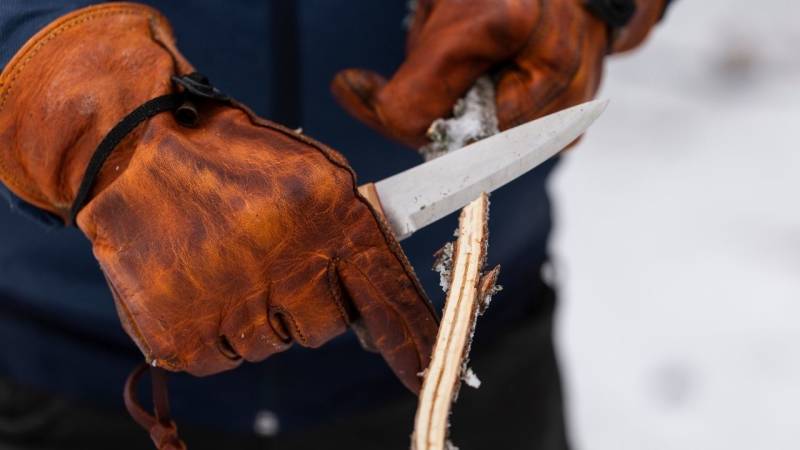
Heat and Sun Protection
Packing for sun and warmth seems initially much simpler than preparing for icy cold. This is also true, as the wrong clothing is not necessarily life-threatening. However, there are some things that are worth mentioning!
First, your clothing should be lightweight and breathable.
1. Protection against moisture and wind
However, rain and wind are often forgotten in the summer. Especially at night, wet clothing can be your downfall. Therefore, a poncho or a lightweight rain jacket is a must.
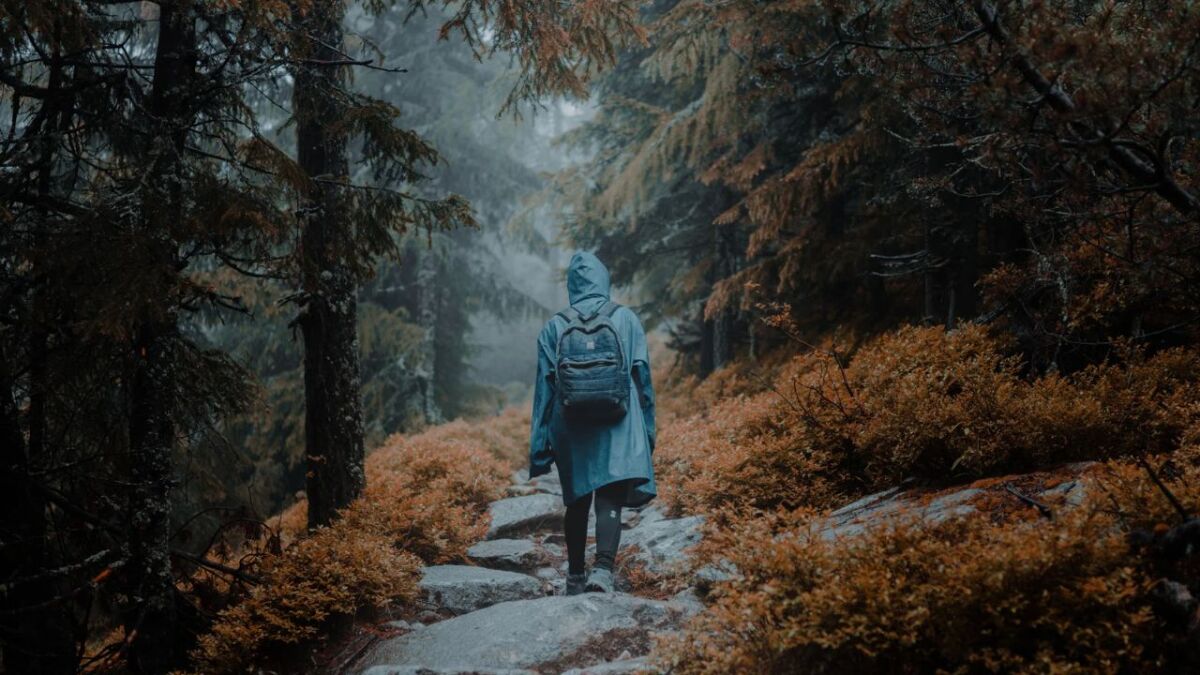
My further recommendation:
2. Pants
Your preference plays a crucial role when it comes to choosing pants. Personally, I prefer long pants when in the wilderness. They provide protection against insects, prickly bushes, and the sun. I believe that by tucking the pants into my socks, I won't have to worry about ticks.
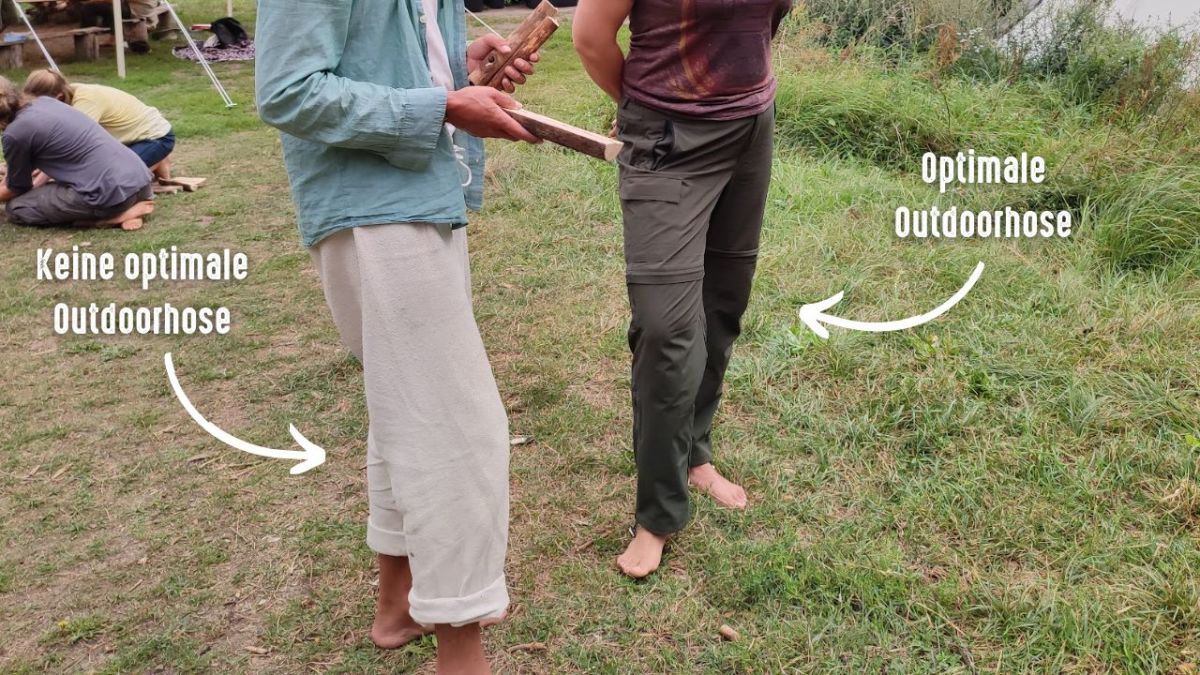
As a rule, the pants should be lightweight and not too tight. The prerequisite is that the pants can breathe well. Trekking, bushcraft, and hunting pants are my first choice here. They are sturdy, elastic, and usually dry quickly.
Unfortunately, cotton falls short compared to synthetic materials when it comes to wetness. However, there is a material blend called G1000 that consists partly of cotton. Combined with ecologically produced wax, you are well-equipped for wind and weather.
But shorts also have their advantages. To save space, I can recommend zip-off pants to you. With these pants, you can remove the legs at the bottom and easily switch between shorts and long pants.
When choosing pants, prioritize comfort above all else. You'll be wearing them all day and need maximum freedom of movement.
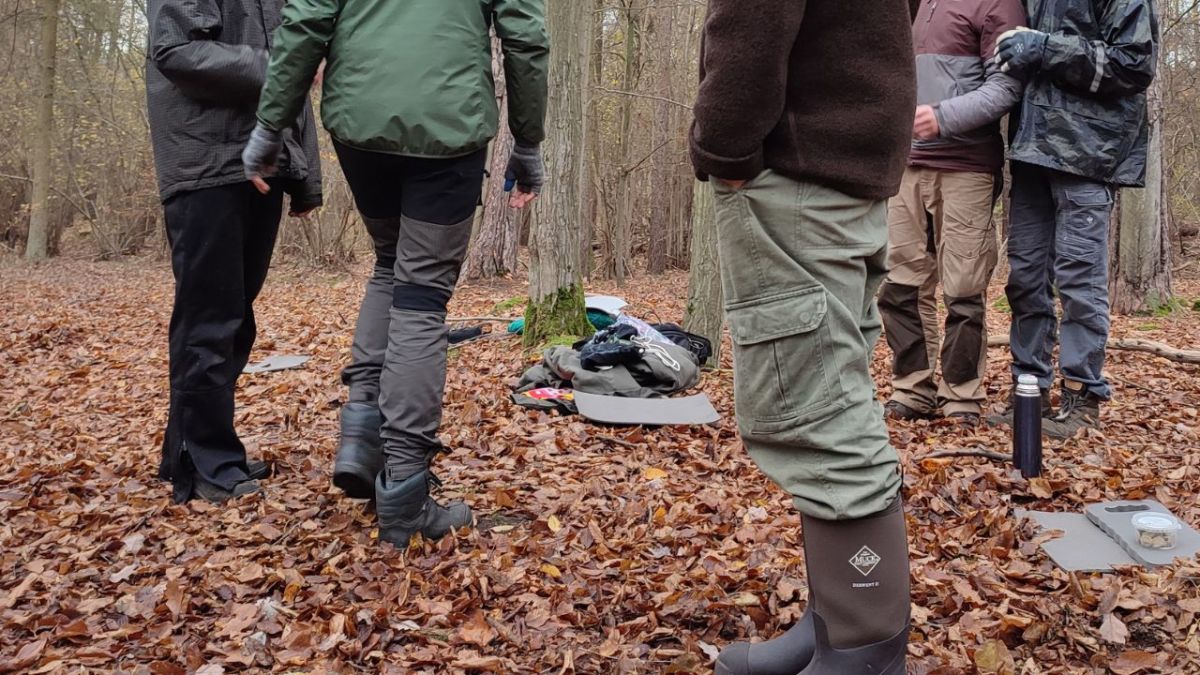
Functional features such as pockets can initially be disregarded and should in no way hinder comfort.
3. T-Shirt
When it comes to your upper body, I am a big fan of merino wool. It has both moisture-wicking and temperature-regulating properties.
Additionally, you can pay attention to the weight of the shirt. The lighter the shirt, the thinner and more breathable the fabric is.
It is worth mentioning that the shirt becomes pricier with thinner material. To protect your investment, you should wash it manually with cold water.
4. Shoes & Socks
If you're not going mountain climbing, you don't need thick hiking boots. However, ankle protection is highly recommended. Unlike cold conditions, breathability is the top priority here.
Shoes and socks go hand in hand in warm weather. You also need breathable socks that dry quickly, otherwise even the most breathable shoe won't help. Here too, I recommend merino wool over synthetic alternatives.
5. Headwear
Your head is particularly vulnerable to heat and sun exposure. Therefore, it is all the more important to find the right headgear for you.
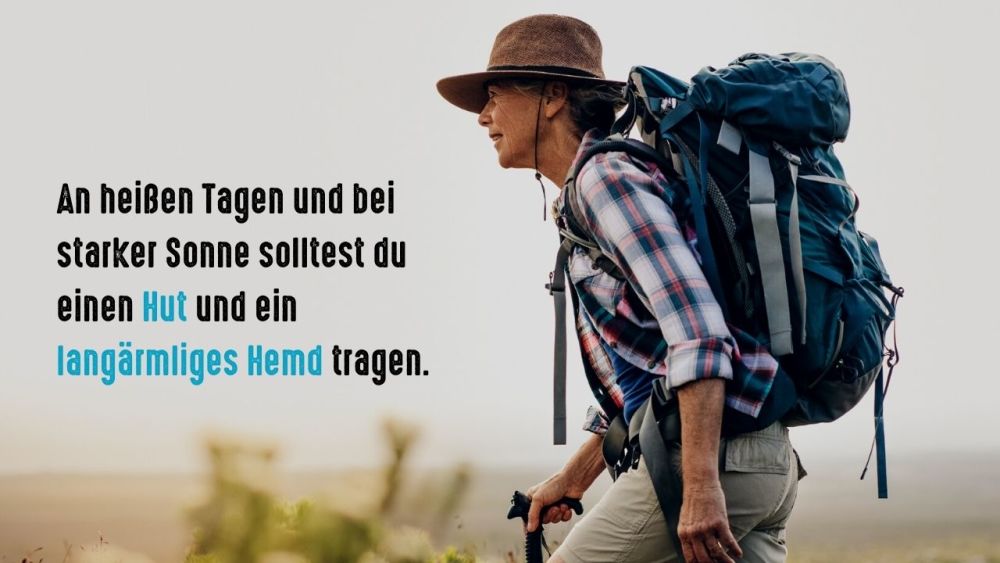
A well-fitting hat or a thin scarf are, in my opinion, a must for every summer outing.
I have already gone into more detail on this topic in this guide.
Color: striking, natural or more camouflage pattern?
Especially when it comes to choosing colors, it depends on the external conditions. The climate does not play a special role here, but rather your visibility or invisibility in the wilderness.
If you want to be seen quickly, brighter colors are needed. Ideally, signal colors like red or yellow. In addition, ticks are more visible here and can be removed before skin contact.
However, in the survival scene, clothing in camouflage, natural tones, or black is much more preferred. This is certainly also a matter of taste.
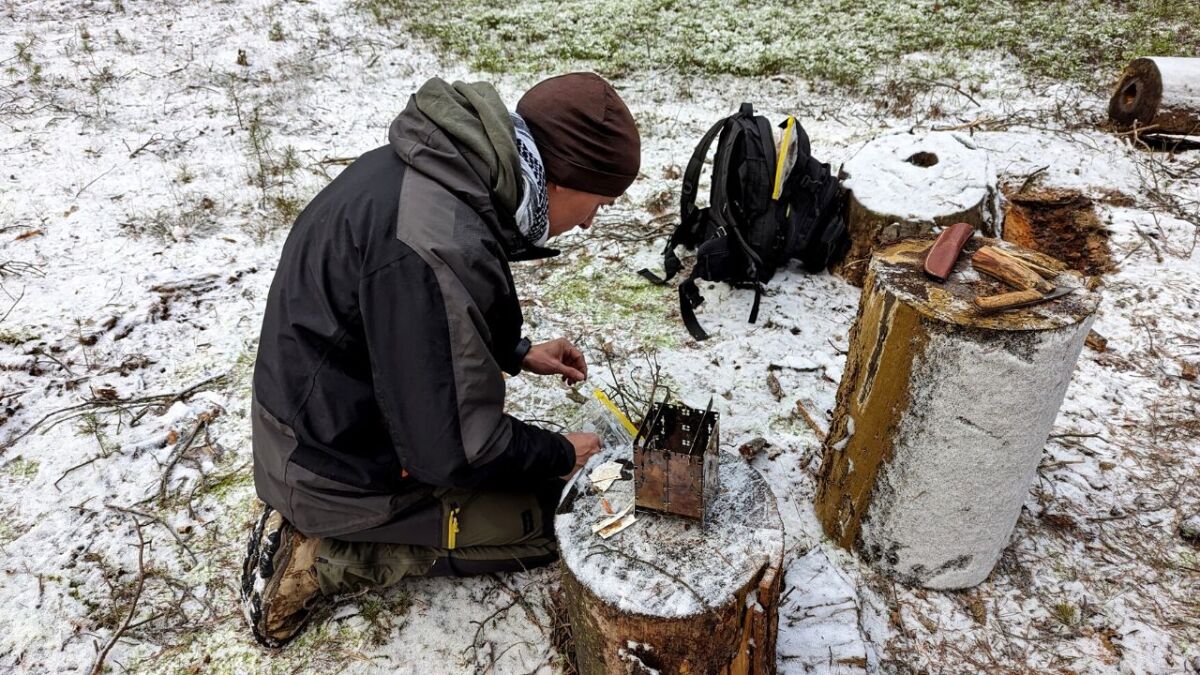
However, natural colors are definitely useful if you would rather not be seen.
If there is a SHTF situation, and you are either on the run or in another dangerous situation, signal colors could be your downfall.
Usually, when you go on your wilderness excursions, you will rely less on invisibility and more on visibility. Because if you fall off a rock or get lost, the search team can see you much better. Bright colors are therefore useful.
But to be honest, I also prefer natural colors in the wilderness. It just feels more organic, and I don't feel like a walking warning sign.
I feel more like a part of nature than just a visitor. I always have a safety vest with me so that I can draw attention to myself in emergencies.
However, if you are lying unconscious on the ground, the warning vest in your backpack will be of little use to you.
Just a quick warning on the side: Consider putting on a safety vest before crossing precarious rock formations.
Sustainable Outdoor Clothing
A large part of outdoor clothing is made synthetically. This is partly necessary, but from an ecological perspective, the production is terrible for nature and the climate.
Generally, the clothing industry is one of the biggest CO₂ emitters and the demand for outdoor clothing is constantly growing.
So, why not protect what we love and keep an eye on the sustainability of companies?
When it comes to synthetic fibers, at least attention can be paid to recycled materials. There are some companies that are successfully working with them.
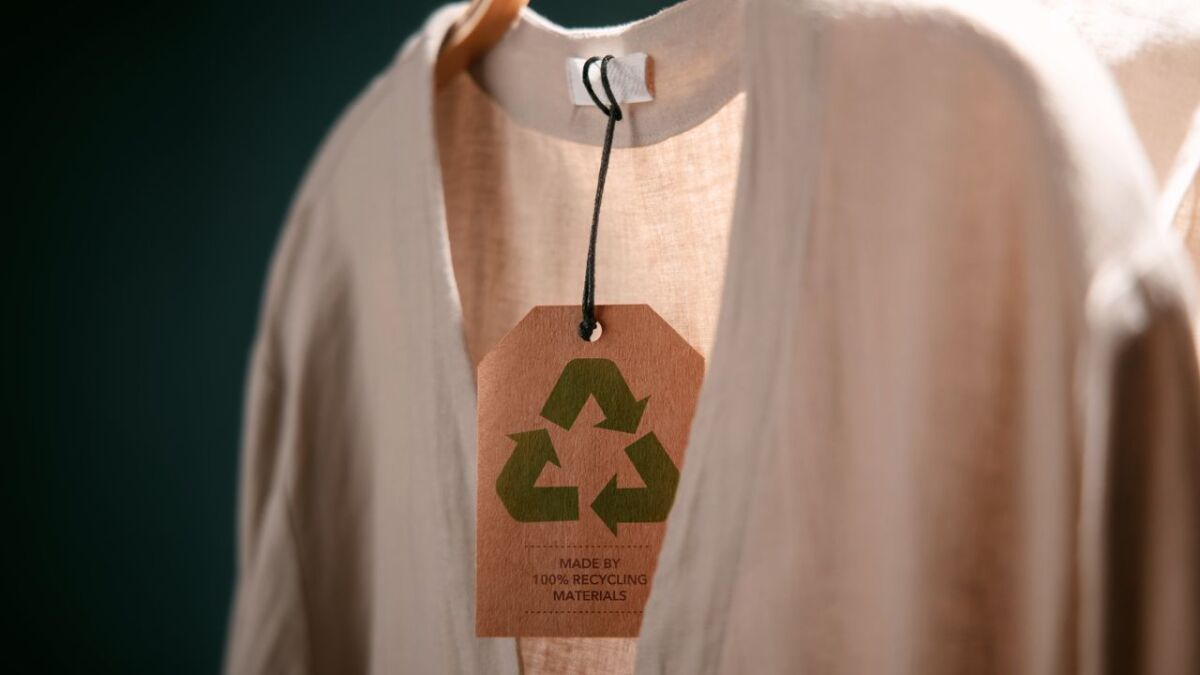
It would be even better if your clothing item could be recycled after use. However, we are still at the very beginning of this and few manufacturers have successfully implemented it.
Because plastic cannot be completely broken down in nature, it causes problems such as microplastics. Therefore, it is important at this point to protect your investments or to opt for used clothing.
When it comes to leather, it is important to be aware of the origin of the products. Animal welfare plays a big role here, but the ecological footprint of livestock farming should also not be ignored.
As a general rule, not every new function is really necessary. Because new clothing with more functions often means the use of more chemicals.
Usually, you can research all clothing manufacturers on the internet and check the sustainability of their clothing.
Summary: my tips for choosing the right clothing
Clothing is not the same as clothing, and yet you shouldn't drive yourself crazy trying to find the ideal clothing.
The guide should give you a rough idea of what to look for when buying your clothes.
And here are my most important tips for choosing clothing for bushcraft, camping, survival, or just being outdoors:
- You prefer wool to cotton and nylon over polyester as materials.
- You often face a trilemma: lightweight, durable, cost-effective - choose two, you can't have them all.
- Clothing is a category where you get what you pay for. So be prepared to "buy once, cry once" and pay for good clothing that will last for several years of hard use. Better to spend €150 once than €50 three times.
- If you have a tight budget, it's almost always better to save than to buy something at a discount store that's €20 cheaper.
- Focus more on materials and construction/design and less on brands.
- Avoid cotton as underwear or t-shirt - cotton absorbs sweat but doesn't release it and stays wet.
- Most clothing items fail at seams and edges. Look for reinforced seams, extra seams, additional or harder material at abrasion points.
- For high-quality survival clothing, look in the following categories: hunting, trekking, hiking, cycling clothing, workwear (including tactical and deployment clothing).
However, the focus is still on experiencing nature. If you can't afford expensive outdoor clothing currently, don't let that stop you from going outside.
If you are traveling in cold regions for a longer period of time, the right clothing is vital. It is recommended to do good preparation, research, and then buy your equipment on site.
So, you can try everything on and get a feel for what you need. If you have also researched sustainable brands beforehand, nothing can go wrong.
Tell me in the comments which clothing you use and which materials you prefer!

Sources for the guide
https://www.dersurvivalprofi.de/tipps-themen/ausr%C3%BCstungs-themen/die-richtige-bekleidung/
https://www.wildnistraining-westerwald.de/know-how/bekleidung/
https://www.dersurvivalprofi.de/tipps-themen/ausr%C3%BCstungs-themen/das-richtige-schuhwerk/
https://utopia.de/ratgeber/wanderbekleidung-nachhaltig-regenjacken-wanderhosen/
https://bushcraftinfo.com/what-do-you-wear-for-survival/
https://www.outsideonline.com/outdoor-gear/hiking-gear/summer-hiking-clothing-shoes/
https://www.bergzeit.de/magazin/wanderhose-kaufberatung-so-finden-sie-die-richtige-hose/
https://survival-kompass.de/warum-im-sommer-kopfbedeckungen-tragen/
https://veggievagabonds.com/ethical-outdoor-clothing/
https://utopia.de/ratgeber/nachhaltige-outdoor-bekleidung/
https://www.quarks.de/umwelt/kleidung-so-macht-sie-unsere-umwelt-kaputt/
https://survival-kompass.de/besten-bushcraft-handschuhe/

Author of the guide
Martin Gebhardt
Hey, I'm Martin. On my blog, you will learn the basics and numerous details about living in the wild. I think survival, bushcraft and the good life in nature are the keys to happiness. Find me here on Instagram or on YouTube. You can find more about my mission on the About Me page.
Since this is a gear guide, here ...
🤝8 reasons to trust my recommendation
-
Practical Experience: I have tested most of the products I recommend under extreme conditions myself.
-
Independence: As a wilderness mentor, I am not tied to any specific brands - this means my recommendations are unbiased.
-
Expertise: My many years of experience allow me to understand the intricacies and details of various products that a layperson might overlook.
-
Target group understanding: I understand the needs and challenges of outdoor enthusiasts, from beginners to seasoned experts.
-
Quality focus: I attach great importance to quality and longevity. These are characteristics that are crucial in the wild.
-
Clear communication: I try to explain the pros and cons of each product clearly and understandably so that you can make an informed decision.
-
Currentness: I always keep my guides up to date and adapt them to new findings or products.
-
Community Feedback: I work in wilderness schools, teach courses myself, attend courses and am active in various outdoor and survival communities and therefore integrate the feedback and experiences of others into my recommendations.
So when I introduce the best survival knives or flashlights, you can be sure that every recommendation is based on solid experience and extensive knowledge.
Was this guide helpful?
25 people found this guide helpful.
5.00 out of 5 points (25 Ratings)
Comments (0)
This post may contain affiliate links. So if you click on the links and make a purchase, I will receive a small commission at no additional cost to you. Click here, to learn more about it.



